-
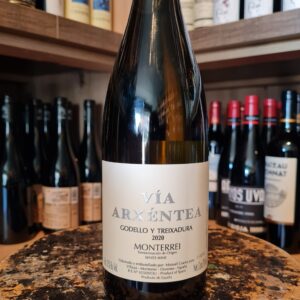 DO Monterrei is the smallest of the Galician DOs and the most recent, having been created in 1996. It is an emerging region located in the province of Ourense in the south-east of Galicia, on the border with Portugal. The Atlantic influence here is not as strong and the climate is hotter and more continental than the rest of Galicia, making it possible to produce impressive whites from Treixadura and Godello as well as reds from autochtonous Mencia. Most of the vineyards are located on the slopes lining the River Támega where the soil has a deep red colour with a high clay content. After spending many years working for other wineries in the area around Galicia, Manuel Guerra Justo decided to break away and set up his own adega, “Via Arxentea”, literally translated as “ The Silver Route”, the local name for the important pilgrimage route of El Camino de Santiago to Santiago de Compostela. Manuel Guerra is a “Colleitero” and therefore responsible for the entire production cycle, from the care in the vineyard to the winemaking. He is the first to acknowledge that the secret to achieving purity and varietal expression in his wines is in his vineyard management which he attends to personally and pampers vine by vine as if they were his own children, with the sole objective of achieving maximum quality. Under the consultancy of well known winemaker, Alvaro Bueno, Manuel Guerra Justo owns four hectares around Verin, planted almost equally between Godello and Treixadura and a small batch of Mencia. Vía Arxentea wine are made from estate bottled fruit, harvested by hand and fermented using indigenous yeasts.
DO Monterrei is the smallest of the Galician DOs and the most recent, having been created in 1996. It is an emerging region located in the province of Ourense in the south-east of Galicia, on the border with Portugal. The Atlantic influence here is not as strong and the climate is hotter and more continental than the rest of Galicia, making it possible to produce impressive whites from Treixadura and Godello as well as reds from autochtonous Mencia. Most of the vineyards are located on the slopes lining the River Támega where the soil has a deep red colour with a high clay content. After spending many years working for other wineries in the area around Galicia, Manuel Guerra Justo decided to break away and set up his own adega, “Via Arxentea”, literally translated as “ The Silver Route”, the local name for the important pilgrimage route of El Camino de Santiago to Santiago de Compostela. Manuel Guerra is a “Colleitero” and therefore responsible for the entire production cycle, from the care in the vineyard to the winemaking. He is the first to acknowledge that the secret to achieving purity and varietal expression in his wines is in his vineyard management which he attends to personally and pampers vine by vine as if they were his own children, with the sole objective of achieving maximum quality. Under the consultancy of well known winemaker, Alvaro Bueno, Manuel Guerra Justo owns four hectares around Verin, planted almost equally between Godello and Treixadura and a small batch of Mencia. Vía Arxentea wine are made from estate bottled fruit, harvested by hand and fermented using indigenous yeasts. -
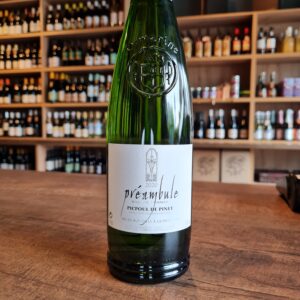 Picpoul de Pinet is a vivid illustration of just how dramatically white wine from the south of France has improved over recent years. Quite simply, the grape variety is Picpoul, or Piquepoul, which is grown around the village of Pinet, and other nearby villages, Florensac, Pomerols. Castelnau de Guers, Mèze and Montagnac. The vineyards form a surprising oasis of white wine in a sea of red wine. The terroir, or soil, explains the reason for this unexpected oasis of white wine. Quite simply the soil is too generous for red wine. It is mainly limestone, which suits white wine, with some clay, sand and appropriately a scattering of fossilised oyster shells. The climate is very much influenced by the sea, with a cooling effect during the nights of the hot summer months, and the vines benefit from maritime breezes. In somes cases it is fair to compare it to Muscadet. Neither packs a punch of flavour, but they provide brilliant accompaniments to the local seafood, and when finely crafted, have deliciously subtle flavours. The cooperative at Pinet, with its brand name L’Ormarine, and striking logo conveying the blue sea, green vines and yellow sun, are amongst the pacesetters of the appellation.
Picpoul de Pinet is a vivid illustration of just how dramatically white wine from the south of France has improved over recent years. Quite simply, the grape variety is Picpoul, or Piquepoul, which is grown around the village of Pinet, and other nearby villages, Florensac, Pomerols. Castelnau de Guers, Mèze and Montagnac. The vineyards form a surprising oasis of white wine in a sea of red wine. The terroir, or soil, explains the reason for this unexpected oasis of white wine. Quite simply the soil is too generous for red wine. It is mainly limestone, which suits white wine, with some clay, sand and appropriately a scattering of fossilised oyster shells. The climate is very much influenced by the sea, with a cooling effect during the nights of the hot summer months, and the vines benefit from maritime breezes. In somes cases it is fair to compare it to Muscadet. Neither packs a punch of flavour, but they provide brilliant accompaniments to the local seafood, and when finely crafted, have deliciously subtle flavours. The cooperative at Pinet, with its brand name L’Ormarine, and striking logo conveying the blue sea, green vines and yellow sun, are amongst the pacesetters of the appellation. -
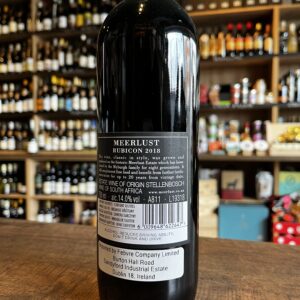
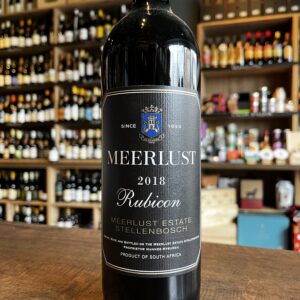 Meerlust Rubicon had a great impact on the history of South African wine. First made in 1980, it essentially set the pattern for Bordeaux blends in the country. There was of course a few pioners at this front that only used Cabernet Sauvignon varietal such as Kanonkop (Paul Sauer) in 1973 but as a blend as per Bordeaux style Meerlust changed the scene. According to Hannes Myburgh, his father was inspired by Julious Cesar words “Alea iacta est. The die is cast,” leading his troops towards Rome in 49BC. As this was a irreversable moment in history as there was no turning back after crossing the Rubicon river as this profoundly shifted Roman politics. Nico Myburgh from the 7th generation of the Meerlust estate and father of the current custodian, was holidaying in Bordeaux when he discovered that the terroir in this area of France was similar to that of the Eerste River Valley. Both have a distinctive climate, characterised by a cooling sea breeze. And both have a soil structure made up of decomposed granite and clay. The red wines produced by the two regions, however, were very different. Unlike the Western Cape’s specified cultivars, Bordeaux thrived on producing blends. Nico returned to Meerlust, filled with inspiration and the desire to create a blend of his own that would match those of the French. In 1980, after several years of experimentation together with winemaker Giorgio Dalla Cia, he announced the birth of the new blend. With proportions of 70% Cabernet Sauvignon, 20% Merlot and 10% Cabernet Franc, a new style of wine had been created in South Africa. Like Caesar, there could be no turning back. Nico and Giorgio had already considered a number of names for the new blend when Professor Dirk Opperman from the University of Stellenbosch, a friend of Nico’s suggested that “Rubicon” might be appropriate. The pair had, after all, crossed a new frontier – and changed the way South Africans thought about red wine. The Cabernet Sauvignon, Merlot, Cabernet Franc and Petit Verdot vineyards are hand harvested from February through to March and each individual vineyard block is kept separate throughout the fermentation process and monitored until the moment of blending.In wintertime, after malolactic fermentation has allowed the personality of each vineyard to assert itself in barrel, the wines are carefully assessed to produce the most expressive, harmonious and complex wine. The blend is assembled and then allowed another year in barrel for the components to harmonise. The wine is finally bottled and left for a further 2 years before release. Rubicon is always released at four years of age and will immediately offer the distinctive character and quality of the Estate. However, further bottle maturation is advised for the intriguing complexity of this classic wine to unfold and reveal itself.The first vintage, the 1980, remains vivacious and very much alive, even 30+ years after vintage. Subsequent vintages all express the personality and characteristics of their specific year. All vintages of Rubicon, however, share the hallmarks of wines grown at this special place: intensity, harmony, vibrancy, complexity and individuality.I suppose we could use here ''Veni, vidi, vici''
Meerlust Rubicon had a great impact on the history of South African wine. First made in 1980, it essentially set the pattern for Bordeaux blends in the country. There was of course a few pioners at this front that only used Cabernet Sauvignon varietal such as Kanonkop (Paul Sauer) in 1973 but as a blend as per Bordeaux style Meerlust changed the scene. According to Hannes Myburgh, his father was inspired by Julious Cesar words “Alea iacta est. The die is cast,” leading his troops towards Rome in 49BC. As this was a irreversable moment in history as there was no turning back after crossing the Rubicon river as this profoundly shifted Roman politics. Nico Myburgh from the 7th generation of the Meerlust estate and father of the current custodian, was holidaying in Bordeaux when he discovered that the terroir in this area of France was similar to that of the Eerste River Valley. Both have a distinctive climate, characterised by a cooling sea breeze. And both have a soil structure made up of decomposed granite and clay. The red wines produced by the two regions, however, were very different. Unlike the Western Cape’s specified cultivars, Bordeaux thrived on producing blends. Nico returned to Meerlust, filled with inspiration and the desire to create a blend of his own that would match those of the French. In 1980, after several years of experimentation together with winemaker Giorgio Dalla Cia, he announced the birth of the new blend. With proportions of 70% Cabernet Sauvignon, 20% Merlot and 10% Cabernet Franc, a new style of wine had been created in South Africa. Like Caesar, there could be no turning back. Nico and Giorgio had already considered a number of names for the new blend when Professor Dirk Opperman from the University of Stellenbosch, a friend of Nico’s suggested that “Rubicon” might be appropriate. The pair had, after all, crossed a new frontier – and changed the way South Africans thought about red wine. The Cabernet Sauvignon, Merlot, Cabernet Franc and Petit Verdot vineyards are hand harvested from February through to March and each individual vineyard block is kept separate throughout the fermentation process and monitored until the moment of blending.In wintertime, after malolactic fermentation has allowed the personality of each vineyard to assert itself in barrel, the wines are carefully assessed to produce the most expressive, harmonious and complex wine. The blend is assembled and then allowed another year in barrel for the components to harmonise. The wine is finally bottled and left for a further 2 years before release. Rubicon is always released at four years of age and will immediately offer the distinctive character and quality of the Estate. However, further bottle maturation is advised for the intriguing complexity of this classic wine to unfold and reveal itself.The first vintage, the 1980, remains vivacious and very much alive, even 30+ years after vintage. Subsequent vintages all express the personality and characteristics of their specific year. All vintages of Rubicon, however, share the hallmarks of wines grown at this special place: intensity, harmony, vibrancy, complexity and individuality.I suppose we could use here ''Veni, vidi, vici'' -
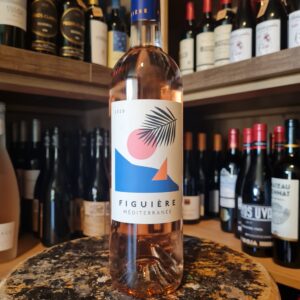 Here is a Provençal estate rosé sure to add some style to your summer! One smell, one sip and you get beamed to the Mediterranean Sea! This delicious Rosé is created by a pioneering Provence domaine of excellence. The family Combard is one of the ambassadors of a new generation of prestigious winemakers. You can smell notes of white flowers that then develop into white peach aromas. The palate expresses the velvety texture of citrus peel and the zestiness of an essential oil. Citrus profile with this wine that is astringent, green, tight and fresh.
Here is a Provençal estate rosé sure to add some style to your summer! One smell, one sip and you get beamed to the Mediterranean Sea! This delicious Rosé is created by a pioneering Provence domaine of excellence. The family Combard is one of the ambassadors of a new generation of prestigious winemakers. You can smell notes of white flowers that then develop into white peach aromas. The palate expresses the velvety texture of citrus peel and the zestiness of an essential oil. Citrus profile with this wine that is astringent, green, tight and fresh. -
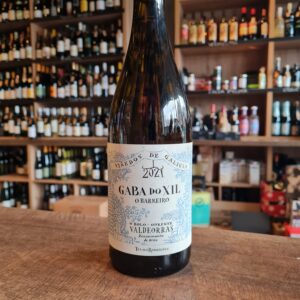 This slinky, mineral white hails from Valdeorras (“Valley of Gold”) in eastern Galicia, a region once famous for goldmining and now best known for its unique and complex wines made from the indigenous Godello grape. The wine is named for the river Sil that flows through the region (Xil is its ancient name, used by the Celtic people who once inhabited the area). Many of the river’s tributaries are flanked on either side by vineyards, planted in terraces on steep slate hillsides. The label displays a dozen bridges, symbolizing the idea of crossing from one vineyard plot to another. Gaba do Xil Godello is produced partially from grapes that are partially estate-grown and partially sourced from long-term suppliers. They come from 4 plots (O Val Grande, O Rasedo, A Torgueira, and O Valverde) located near the Bibei tributary, close to the town of Santa Cruz. Dotted with chestnut trees mixed with rockrose, the old granitic terraces barely have enough space to squeeze in the odd row of vines, following the folds of the mountains that plunge into the river. The vines grow in shallow, stony granite soils on terraces facing south, west and northwest. These coarse soils are low fertility and have low water retention capacity, forcing the vines to struggle and limiting yields. This Godello, is unoaked, gentle, restrained and precise which is dry and soft with a touch of godello's distinctive minerally citrus fruit, absoloutly perfect with light sea food dishes. Excellent value
This slinky, mineral white hails from Valdeorras (“Valley of Gold”) in eastern Galicia, a region once famous for goldmining and now best known for its unique and complex wines made from the indigenous Godello grape. The wine is named for the river Sil that flows through the region (Xil is its ancient name, used by the Celtic people who once inhabited the area). Many of the river’s tributaries are flanked on either side by vineyards, planted in terraces on steep slate hillsides. The label displays a dozen bridges, symbolizing the idea of crossing from one vineyard plot to another. Gaba do Xil Godello is produced partially from grapes that are partially estate-grown and partially sourced from long-term suppliers. They come from 4 plots (O Val Grande, O Rasedo, A Torgueira, and O Valverde) located near the Bibei tributary, close to the town of Santa Cruz. Dotted with chestnut trees mixed with rockrose, the old granitic terraces barely have enough space to squeeze in the odd row of vines, following the folds of the mountains that plunge into the river. The vines grow in shallow, stony granite soils on terraces facing south, west and northwest. These coarse soils are low fertility and have low water retention capacity, forcing the vines to struggle and limiting yields. This Godello, is unoaked, gentle, restrained and precise which is dry and soft with a touch of godello's distinctive minerally citrus fruit, absoloutly perfect with light sea food dishes. Excellent value -
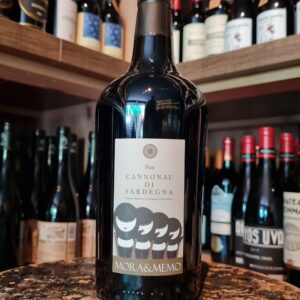 In a region dominated by cooperatives, Mora e Memo stand out for many reasons. This beautiful estate sits high in the hills in the South East of Sardinia just a few kilometres from the sea. Focused on the indigenous Sardinian varieties of Cannonau and Vermentino the combination of mature vineyards, sensitive farming and a delicate touch in their modern and technologically well equipped cellar results in elegant, vibrant mineral wines- very different from the rustic Sardinian norm. Pair it with Salami Antipasti, pasta dishes with tasty sauces, red meats, mature cheeses.
In a region dominated by cooperatives, Mora e Memo stand out for many reasons. This beautiful estate sits high in the hills in the South East of Sardinia just a few kilometres from the sea. Focused on the indigenous Sardinian varieties of Cannonau and Vermentino the combination of mature vineyards, sensitive farming and a delicate touch in their modern and technologically well equipped cellar results in elegant, vibrant mineral wines- very different from the rustic Sardinian norm. Pair it with Salami Antipasti, pasta dishes with tasty sauces, red meats, mature cheeses. -
Out of stock
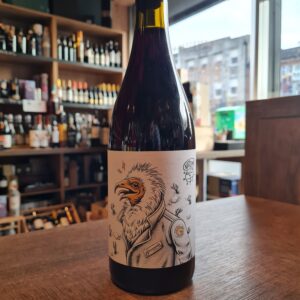 Ricardo Alves and Frederico Machado visited Bemposta for the first time together in 2017. They were on the Portuguese back roads in the Parque Natural das Arribas do Douro, with its wealth of ancient, indigenous and largely forgotten grapevines chaotically perched on the extreme slopes on the Douro river gorge, when they came upon the perfect location for their life project, the place to which they would commit their youth. They set out to rediscover and revitalize an ancient wine culture whose local home winegrowers have just barely kept the faint bloodline of their vinous history from extinction. Trás-os-Montes is a large, but not too well known, wine region of north eastern Portugal (Translation: behind the Mountains), is where the Arribas Wine Company are based and both are very passionate have been making some very interesting wines. Saroto Tinto is made from a small, old parcel of vines comprised of old-fashioned red and white Douro varieties. The resultant wine is full of wild forest fruit, lots of berries with a kick of natural sourness. Plenty of fresh acidity adds juiciness and balances the rustic, grippy tannins, making for quite a light red. Earthy minerality adds extra complexity and the finish is long and moreish. Its bottled unfined and unfiltered so may have natural sediment in the bottle.
Ricardo Alves and Frederico Machado visited Bemposta for the first time together in 2017. They were on the Portuguese back roads in the Parque Natural das Arribas do Douro, with its wealth of ancient, indigenous and largely forgotten grapevines chaotically perched on the extreme slopes on the Douro river gorge, when they came upon the perfect location for their life project, the place to which they would commit their youth. They set out to rediscover and revitalize an ancient wine culture whose local home winegrowers have just barely kept the faint bloodline of their vinous history from extinction. Trás-os-Montes is a large, but not too well known, wine region of north eastern Portugal (Translation: behind the Mountains), is where the Arribas Wine Company are based and both are very passionate have been making some very interesting wines. Saroto Tinto is made from a small, old parcel of vines comprised of old-fashioned red and white Douro varieties. The resultant wine is full of wild forest fruit, lots of berries with a kick of natural sourness. Plenty of fresh acidity adds juiciness and balances the rustic, grippy tannins, making for quite a light red. Earthy minerality adds extra complexity and the finish is long and moreish. Its bottled unfined and unfiltered so may have natural sediment in the bottle. -
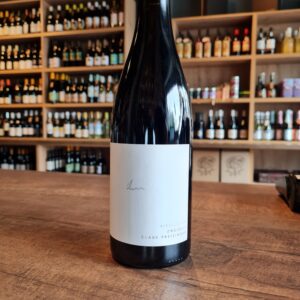 Claus Preisinger has honed his skills around the world, working in vineyards in California, before returning to his Austrian roots to work for Anita and Hans Nittnaus. After branching out on his own, he has kept the respectful and honest winemaking he learned there, and is applying it a stone's throw away in the town of Gols. His "Kieselstein" Zweigelt is one of the most immediately enjoyable wines that I have had the opportunity to drink as of late. This beautifully pure Zweigelt was fermented in neutral barrels with a touch of sulphur added at bottling. Claus Preisinger has been using ambient yeasts since 2002 as well as little to no sulfites. The Preisinger wines are certified biodynamic, which Claus takes very seriously. His commitment to the environment and non-interventional winemaking shines through in the superior wines he produces. Super fresh and juicy. Can be served chilled.
Claus Preisinger has honed his skills around the world, working in vineyards in California, before returning to his Austrian roots to work for Anita and Hans Nittnaus. After branching out on his own, he has kept the respectful and honest winemaking he learned there, and is applying it a stone's throw away in the town of Gols. His "Kieselstein" Zweigelt is one of the most immediately enjoyable wines that I have had the opportunity to drink as of late. This beautifully pure Zweigelt was fermented in neutral barrels with a touch of sulphur added at bottling. Claus Preisinger has been using ambient yeasts since 2002 as well as little to no sulfites. The Preisinger wines are certified biodynamic, which Claus takes very seriously. His commitment to the environment and non-interventional winemaking shines through in the superior wines he produces. Super fresh and juicy. Can be served chilled. -
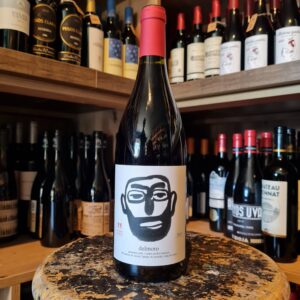 La Comarcal del Moro is part of a collaboration of two friends, Javi Revert and Victor Marqués, who first worked together at Celler del Roure. This wine comes from terroir specific vineyards to express the very best of the varieties they work with. Delmoro is predominantly Garnacha with some Bobal and Syrah in the blend, fermented separately, and aged in stainless steel and oak. All coming from a four hectare single vineyard. Rustic, but seductive, young but with some great lenght and complexity, this wine is not to be underestimated. Goes beautifully with poultry, pork and salmon.
La Comarcal del Moro is part of a collaboration of two friends, Javi Revert and Victor Marqués, who first worked together at Celler del Roure. This wine comes from terroir specific vineyards to express the very best of the varieties they work with. Delmoro is predominantly Garnacha with some Bobal and Syrah in the blend, fermented separately, and aged in stainless steel and oak. All coming from a four hectare single vineyard. Rustic, but seductive, young but with some great lenght and complexity, this wine is not to be underestimated. Goes beautifully with poultry, pork and salmon. -
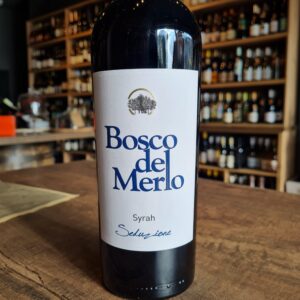 The Syrah is an international grape variety famous for its spicy notes that Bosco del Merlo interprets with great elegance. The grapes are harvest at optimally maturity during the last days of September. This Syrah ''Seduzione'' is large and round wine with great character. Enveloping and very pleasant for its harmony and wideness. Ideal for all meals, excellent with dishes of boiled and baked meats. Perfect with cold cuts and cheeses of medium maturing and insuperable alone, after dinner or in company.
The Syrah is an international grape variety famous for its spicy notes that Bosco del Merlo interprets with great elegance. The grapes are harvest at optimally maturity during the last days of September. This Syrah ''Seduzione'' is large and round wine with great character. Enveloping and very pleasant for its harmony and wideness. Ideal for all meals, excellent with dishes of boiled and baked meats. Perfect with cold cuts and cheeses of medium maturing and insuperable alone, after dinner or in company. -
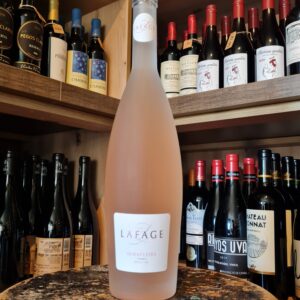 Fantastic Rosé! This organic beauty is just about as good as Rosé can get… beautiful bouquet of roses, strawberry and white peach. The palate is round, polished, silky and wonderfully balanced between fruity generosity and refreshing, minerally more-ishness. Grab some of this wine for summer while you can. It will sell out! It is another beauty that is clean, pure, has textured and elegant on the palate, with gorgeous purity, it’s a rocking rosé that does everything right. Its freshness and good acidity makes it the perfect companion for snacks and fresh dishes, fruit salads, grilled white fish without sauces, vegetable salads and the legendary pasta salads. In short, a wine to drink and taste at all hours.
Fantastic Rosé! This organic beauty is just about as good as Rosé can get… beautiful bouquet of roses, strawberry and white peach. The palate is round, polished, silky and wonderfully balanced between fruity generosity and refreshing, minerally more-ishness. Grab some of this wine for summer while you can. It will sell out! It is another beauty that is clean, pure, has textured and elegant on the palate, with gorgeous purity, it’s a rocking rosé that does everything right. Its freshness and good acidity makes it the perfect companion for snacks and fresh dishes, fruit salads, grilled white fish without sauces, vegetable salads and the legendary pasta salads. In short, a wine to drink and taste at all hours. -
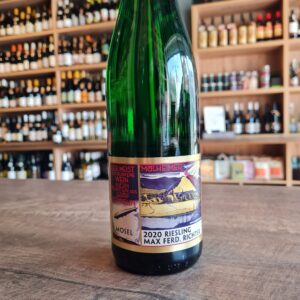 Max Ferdinand Richter winery produces this classic off-dry Mosel Riesling from the Mulheimer Sonnenlay vineyard. The bottle features a beautiful Art Deco label depicting the Zeppelin airships upon which this Riesling was served in the 1920's and 30's. "The Mülheimer Sonnenlay is the largest single Richter vineyard and the source of the world-renowned “Zeppelin” Riesling. The vineyard sits on the west-southwestern side of a slate stone hill south of Mülheim, a dry riverbed formed during the last ice age 250,000 years ago. The name of the vineyard– Sonne (sunshine) and lay (slate stone) –perfectly describes the characteristics of the site. This often extremely steep vineyard has a loose slate stone soil structure that is enriched by pebbles, loam and sand deposited by the ancient river. This kind of soil creates wines that combine typical slate stone mineral character with animated and elegant fruitiness." When possible, they utilize natural yeasts and eschew chemical fining agents. Max Ferdinand Richter’s 48 steep acres are spread out in the Middle Mosel Valley between Erden and Brauneberg. Plantings consist of 95% Riesling and 5% Pinot Blanc grapes. The average age of Richter vines is 40 years. "Wines from the Mülheimer Sonnenlay were served on the luxurious Zeppelin airships -including the Hindenburg - in the 1920s and 30s. Local growers, proud of this distinction, commissioned Bauhaus artist Hans Schlösser to design a label for the wine incorporating the iconic Zeppelin airship. The label is still featured today."
Max Ferdinand Richter winery produces this classic off-dry Mosel Riesling from the Mulheimer Sonnenlay vineyard. The bottle features a beautiful Art Deco label depicting the Zeppelin airships upon which this Riesling was served in the 1920's and 30's. "The Mülheimer Sonnenlay is the largest single Richter vineyard and the source of the world-renowned “Zeppelin” Riesling. The vineyard sits on the west-southwestern side of a slate stone hill south of Mülheim, a dry riverbed formed during the last ice age 250,000 years ago. The name of the vineyard– Sonne (sunshine) and lay (slate stone) –perfectly describes the characteristics of the site. This often extremely steep vineyard has a loose slate stone soil structure that is enriched by pebbles, loam and sand deposited by the ancient river. This kind of soil creates wines that combine typical slate stone mineral character with animated and elegant fruitiness." When possible, they utilize natural yeasts and eschew chemical fining agents. Max Ferdinand Richter’s 48 steep acres are spread out in the Middle Mosel Valley between Erden and Brauneberg. Plantings consist of 95% Riesling and 5% Pinot Blanc grapes. The average age of Richter vines is 40 years. "Wines from the Mülheimer Sonnenlay were served on the luxurious Zeppelin airships -including the Hindenburg - in the 1920s and 30s. Local growers, proud of this distinction, commissioned Bauhaus artist Hans Schlösser to design a label for the wine incorporating the iconic Zeppelin airship. The label is still featured today." -
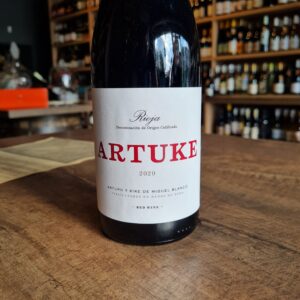 Made in a Beaujolais style, with the carbonic maceration method. This juicy ''Joven'' fresh fruited style of Rioja has zero oak influence as it ages in concrete tanks for 6 months. Farmed without any synthetic fertilizers or pesticides. Arturo Blanco was once asked what the philosophy at Bodegas Artuke was and he simply replied 'we are farmers'. The approach here is 100% focused on interpreting the family's 32 plots which are split between the villages of Baños de Ebro and Ábalos in Rioja Alavesa. Biodynamic techniques are employed in the vineyards and Arturo and Kike are also busy recovering old, ignored plots of ancient vines. Vinification is aimed at expressing the characteristics of the vineyard and quality of fruit above all else. The restrained use of oak and inclination towards different types/sizes of barrel, plus an unwillingness to adhere to the subscribed regimes for classification means that Artuke are precluded from using Crianza, Reserva and Gran Reserva designations on their wines. This mouth-watering red wine takes a relatively deep chill which makes it a versatile pairing with all types of food: tuna, pretty much anything made with zucchini, fried chicken, gooey cheese sandwiches, pizza, etc…
Made in a Beaujolais style, with the carbonic maceration method. This juicy ''Joven'' fresh fruited style of Rioja has zero oak influence as it ages in concrete tanks for 6 months. Farmed without any synthetic fertilizers or pesticides. Arturo Blanco was once asked what the philosophy at Bodegas Artuke was and he simply replied 'we are farmers'. The approach here is 100% focused on interpreting the family's 32 plots which are split between the villages of Baños de Ebro and Ábalos in Rioja Alavesa. Biodynamic techniques are employed in the vineyards and Arturo and Kike are also busy recovering old, ignored plots of ancient vines. Vinification is aimed at expressing the characteristics of the vineyard and quality of fruit above all else. The restrained use of oak and inclination towards different types/sizes of barrel, plus an unwillingness to adhere to the subscribed regimes for classification means that Artuke are precluded from using Crianza, Reserva and Gran Reserva designations on their wines. This mouth-watering red wine takes a relatively deep chill which makes it a versatile pairing with all types of food: tuna, pretty much anything made with zucchini, fried chicken, gooey cheese sandwiches, pizza, etc… -
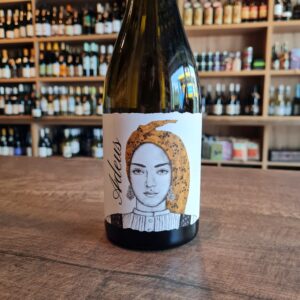 Adeus is the same in Galician as it is Portuguese and means ''Goodbye''. It is also the title of a Galician poem done by one of the most famous poets of Galicia, Rosalia de Castro. One worth that stays in between the love for her land and a homage to a woman that means so much for the history of Galicia. The Ribeiro is 45 km inland from the Atlantic Ocean and is situated in the middle of Valleys that protects it from the Atlantic winds. With 3 Rivers crossing has excellent conditions to produce wine. An excellent pair to grilled octopus with white asparagus garnish, monkfish fillet with stewed spinach and shrimps in garlic sauce
Adeus is the same in Galician as it is Portuguese and means ''Goodbye''. It is also the title of a Galician poem done by one of the most famous poets of Galicia, Rosalia de Castro. One worth that stays in between the love for her land and a homage to a woman that means so much for the history of Galicia. The Ribeiro is 45 km inland from the Atlantic Ocean and is situated in the middle of Valleys that protects it from the Atlantic winds. With 3 Rivers crossing has excellent conditions to produce wine. An excellent pair to grilled octopus with white asparagus garnish, monkfish fillet with stewed spinach and shrimps in garlic sauce -
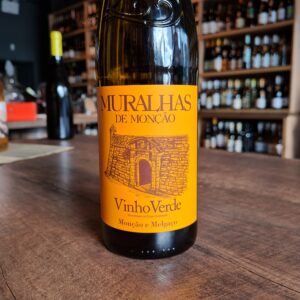 Monção e Melgaço has been producing wines and recognized for it since Roman occupation times, but was with Afonso III, 5th King of Portugal(1210-1279) that signed a ''Foral'' that conceded Monção e Melgaço habitants the owners of the local wine and therefore they produced it with pride as they do today. The wine is made from the Alvarinho (predominant) and Trajadura varieties, indigenous to Portugal and the region, more specifically. The dry Muralhas de Moncao Vinho Verde never seems intrusive, but is soft, elegant and harmonious with no wood whatsoever. The wine goes well not only as an aperitif, but also with salads, seafood, fish dishes and white meat.
Monção e Melgaço has been producing wines and recognized for it since Roman occupation times, but was with Afonso III, 5th King of Portugal(1210-1279) that signed a ''Foral'' that conceded Monção e Melgaço habitants the owners of the local wine and therefore they produced it with pride as they do today. The wine is made from the Alvarinho (predominant) and Trajadura varieties, indigenous to Portugal and the region, more specifically. The dry Muralhas de Moncao Vinho Verde never seems intrusive, but is soft, elegant and harmonious with no wood whatsoever. The wine goes well not only as an aperitif, but also with salads, seafood, fish dishes and white meat. -
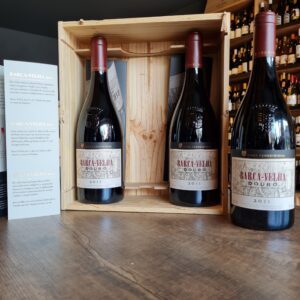 Casa Ferreirinha, was acquired by Sogrape Vinhos in 1987, its wines are synonymous with time and art. This has happened since its foundation, in the 18th century, by the hand of Bernardo Ferreira, who saw the formula refined by his descendants, especially by his granddaughter Dona Antónia Adelaide Ferreira, who affectionately became known as "Ferreirinha" or "Ferreirinha-da-Régua" for the people of that land. Through the hands of Dona Antónia, who twice widowed herself at the head of a large company, Ferreira consolidated itself admirably. Her entrepreneurial spirit taught her to foresee, decide, create, teach and love, making her a figure of great projection and charisma. Barca Velha is the result of the passion of Fernando Nicolau de Almeida (Casa Ferreirinha Head Winemaker in 1952), who envisioned a high quality Douro Red Wines made with the aging potential of Vintage Ports. The first harvest was 1952. Barca Velha is only released in exceptional years, current head winemaker Luis Sottomayor began his career at this house as an apprentice learning directly from Fernando Nicolau D'Almeida. ''2011 was an extraordinary year-one of the best ever in Douro-Intense and exceptional quality. When this wine was born, we soon realized that it would be destined for Barca-Velha”. But even so, it was necessary to pass the great test of time with distinction. In the barrels, first, and then in the bottle, it was followed and evaluated over nine years, until the final decision was made.
Casa Ferreirinha, was acquired by Sogrape Vinhos in 1987, its wines are synonymous with time and art. This has happened since its foundation, in the 18th century, by the hand of Bernardo Ferreira, who saw the formula refined by his descendants, especially by his granddaughter Dona Antónia Adelaide Ferreira, who affectionately became known as "Ferreirinha" or "Ferreirinha-da-Régua" for the people of that land. Through the hands of Dona Antónia, who twice widowed herself at the head of a large company, Ferreira consolidated itself admirably. Her entrepreneurial spirit taught her to foresee, decide, create, teach and love, making her a figure of great projection and charisma. Barca Velha is the result of the passion of Fernando Nicolau de Almeida (Casa Ferreirinha Head Winemaker in 1952), who envisioned a high quality Douro Red Wines made with the aging potential of Vintage Ports. The first harvest was 1952. Barca Velha is only released in exceptional years, current head winemaker Luis Sottomayor began his career at this house as an apprentice learning directly from Fernando Nicolau D'Almeida. ''2011 was an extraordinary year-one of the best ever in Douro-Intense and exceptional quality. When this wine was born, we soon realized that it would be destined for Barca-Velha”. But even so, it was necessary to pass the great test of time with distinction. In the barrels, first, and then in the bottle, it was followed and evaluated over nine years, until the final decision was made. -
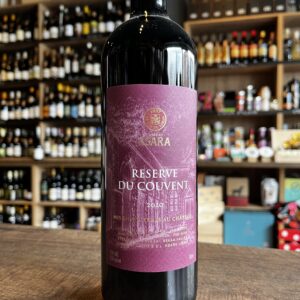 Reserve Du Couvent is the backbone of the Château Ksara range, a ready-to-drink, medium to full-bodied wine, which owes its inspiration to the wines of the Northern Rhone and Bordeaux. Pair it with Sirloin, Lamb and medium strong cheeses. Ksara estate, named so because it was the site of a ksar, or fortress, at the time of the Crusades. The property situated in the heart of the Bekaa Valley, near Baalbeck, was acquired by the Jesuit Fathers in 1857 when it was already famed as a vineyard and they perpetuated the tradition of winemaking. No one really knows for certain when wine was first made in Lebanon, the Phoenician ancestors of today's Lebanese were certainly among the earliest winemakers. Later, in the Greco-Roman era, a wine cult flourished, as the ruins of the Temple of Bacchus at Baalbeck in Lebanon's Bekaa Valley bear eloquent witness. Ksara's natural wine cellar was a grotto discovered by the Romans who consolidated part of the vault and dug several narrow tunnels from the cave into the surrounding chalk. These tunnels were enlarged to their present size during World War I when the Jesuit Fathers sought to alleviate famine in Lebanon by creating employment. One hundred men toiled with picks and shovels for four years to complete an underground network of tunnels stretching for almost two kilometres (about 2,000 yards).The temperature in the tunnels is ideal for wine, varying throughout the year from 11 to 13ºC. Ksara came into the hands of its present owners when the Jesuit Fathers decided to sell the estate in conformity with the directives of the Vatican II synod. Having grown significantly since its foundation, vineyards spread around the Chateau’s complex which includes the winery, a tasting room/restaurant, and Lebanon’s first astronomy/observation tour. Located in the heart of the Bekaa Valley at an average altitude of 1,000 meters, vines grow without pesticides or herbicides. The soil ranges from chalk, to clay and chalk, to clay and limestone, but it is always stony. A fantastic wine that kept its value humble and therefore on the right side of the price comparing to some of other wines found in the area. Enjoy this unique and great find!
Reserve Du Couvent is the backbone of the Château Ksara range, a ready-to-drink, medium to full-bodied wine, which owes its inspiration to the wines of the Northern Rhone and Bordeaux. Pair it with Sirloin, Lamb and medium strong cheeses. Ksara estate, named so because it was the site of a ksar, or fortress, at the time of the Crusades. The property situated in the heart of the Bekaa Valley, near Baalbeck, was acquired by the Jesuit Fathers in 1857 when it was already famed as a vineyard and they perpetuated the tradition of winemaking. No one really knows for certain when wine was first made in Lebanon, the Phoenician ancestors of today's Lebanese were certainly among the earliest winemakers. Later, in the Greco-Roman era, a wine cult flourished, as the ruins of the Temple of Bacchus at Baalbeck in Lebanon's Bekaa Valley bear eloquent witness. Ksara's natural wine cellar was a grotto discovered by the Romans who consolidated part of the vault and dug several narrow tunnels from the cave into the surrounding chalk. These tunnels were enlarged to their present size during World War I when the Jesuit Fathers sought to alleviate famine in Lebanon by creating employment. One hundred men toiled with picks and shovels for four years to complete an underground network of tunnels stretching for almost two kilometres (about 2,000 yards).The temperature in the tunnels is ideal for wine, varying throughout the year from 11 to 13ºC. Ksara came into the hands of its present owners when the Jesuit Fathers decided to sell the estate in conformity with the directives of the Vatican II synod. Having grown significantly since its foundation, vineyards spread around the Chateau’s complex which includes the winery, a tasting room/restaurant, and Lebanon’s first astronomy/observation tour. Located in the heart of the Bekaa Valley at an average altitude of 1,000 meters, vines grow without pesticides or herbicides. The soil ranges from chalk, to clay and chalk, to clay and limestone, but it is always stony. A fantastic wine that kept its value humble and therefore on the right side of the price comparing to some of other wines found in the area. Enjoy this unique and great find! -
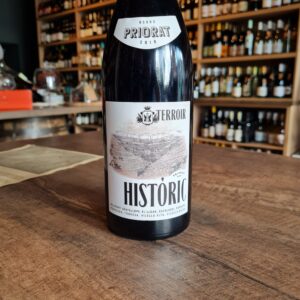 Històric Negre is a red wine from the D.O. Priorat, produced by the Terroir al Límit winery.
Històric Negre is a red wine from the D.O. Priorat, produced by the Terroir al Límit winery.All the wines at Terroir Al Límit are elaborated practicing sustainable viticulture, with a great respect for the nature and its surroundings. The wines are organically farmed following ecological principles. Respect of the environment makes itself throughout the winemaking process, from the grape harvest down to the bottling. The grapes are hand harvested and hand sorted both in the vineyards an the Cellar. Since its beginning in 2004, Terroir Al Limit has reached a highly respected status not only in the region but also worldwide, producing wines of highest purity and maximum expression of terroir.
Made from mostly Garnacha with the remaining quarter being Cariñena the fruit is sourced from vineyards in nine of the historic Priorat villages. The fruit is put in cement tanks, gently crushed and then essentially left to ferment with as little interference as possible. Super elegant wine, with a lot of character and honest expression of the one most iconic regions in Spain.
Decant it for 2 hours, enjoy it with great food or on its own -
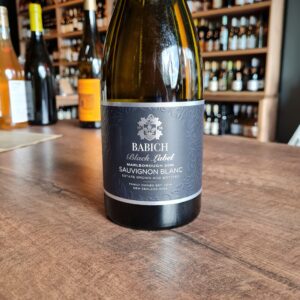 The Babich family hails from Croatia and first bought land in New Zealand in 1916. The winery is now in its third generation. Fruit for this wine comes from a variety of its estate-owned vineyards which are sustainable or organic. Most of the juice for this wine is fermented in stainless steel with a small percentage in old oak. Crafted with food in mind-weighty, ripe, tropical fruit, flavoured style, rich and rounded. Pair it with veal, seafood (oysters) or a chicken dish.
The Babich family hails from Croatia and first bought land in New Zealand in 1916. The winery is now in its third generation. Fruit for this wine comes from a variety of its estate-owned vineyards which are sustainable or organic. Most of the juice for this wine is fermented in stainless steel with a small percentage in old oak. Crafted with food in mind-weighty, ripe, tropical fruit, flavoured style, rich and rounded. Pair it with veal, seafood (oysters) or a chicken dish. -
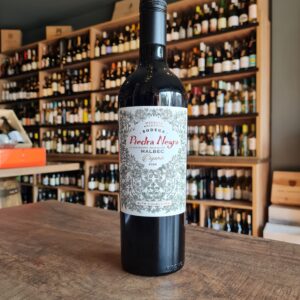 François Lurton vineyards are situated in the highlands (1,100 m) and semi-desert (poor alluvial gravels reminiscent of those of Pessac-Léognan), in the plains at the foot of the mountain range of the Andes: the Uco Valley. Thanks to his experience, acquired all over the world, he practices an environmentally friendly viticulture and produces extraordinary wines here that have a unique personality that combines freshness and concentration. Thanks to the climatic conditions of this high altitude desert and very draining and not very fertile alluvial gravel soils, the wines of the Uco Valley, and especially those of Los Chacayes, are quite unique and François Lurton vision was a success. This Malbec has a an outstanding quality/price ratio and it is definitely a contender not only for those summer barbecues but also for those cold winter nights. Pair it with Carpaccio, Paella, Iberian ham, red pepper stuffed with cheese and Hummus.
François Lurton vineyards are situated in the highlands (1,100 m) and semi-desert (poor alluvial gravels reminiscent of those of Pessac-Léognan), in the plains at the foot of the mountain range of the Andes: the Uco Valley. Thanks to his experience, acquired all over the world, he practices an environmentally friendly viticulture and produces extraordinary wines here that have a unique personality that combines freshness and concentration. Thanks to the climatic conditions of this high altitude desert and very draining and not very fertile alluvial gravel soils, the wines of the Uco Valley, and especially those of Los Chacayes, are quite unique and François Lurton vision was a success. This Malbec has a an outstanding quality/price ratio and it is definitely a contender not only for those summer barbecues but also for those cold winter nights. Pair it with Carpaccio, Paella, Iberian ham, red pepper stuffed with cheese and Hummus. -
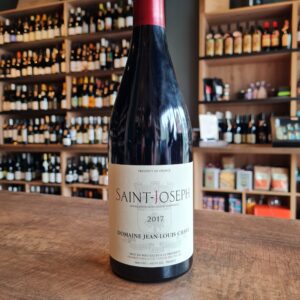 Since 1481, the Chave family has been lording the soils of the Hermitage. Probably they are amongst the best visionaries and observers of the French wines in general. The vineyards are cultivated organically, with methods that favor very low yields and full ripeness, followed by minimal intervention in the winemaking process. The family's pride and joy is the Syrah planted on the fabled hill of Hermitage, but their wines from Saint-Joseph, a small nearby village devoted to the same grape, are a close second and represent distinct value. Syrah here doesn't taste like the bombastic syrah of California or Australia; rather, it's smoky, savory, and tastes like blackberries and black pepper.
Since 1481, the Chave family has been lording the soils of the Hermitage. Probably they are amongst the best visionaries and observers of the French wines in general. The vineyards are cultivated organically, with methods that favor very low yields and full ripeness, followed by minimal intervention in the winemaking process. The family's pride and joy is the Syrah planted on the fabled hill of Hermitage, but their wines from Saint-Joseph, a small nearby village devoted to the same grape, are a close second and represent distinct value. Syrah here doesn't taste like the bombastic syrah of California or Australia; rather, it's smoky, savory, and tastes like blackberries and black pepper. -
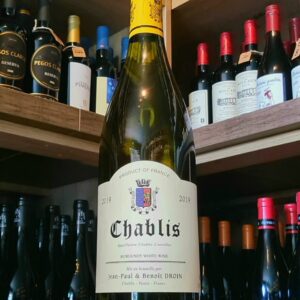 Benoît Droin is one of the most respected winemakers in Chablis. This is the entry point to his range; it highlights the potential of “lesser” wines from top producers. It’s from two parcels, both on Portlandian limestone on the plateau above the Grands Crus. Balanced approach pest control. Soils maintained via regular ploughing. The soils are generally shallow. The sub-soil alternates between grey marl and bands of limestone sometimes very rich in "exogyra virgula" fossils - small, comma-shaped oysters characteristic of the marls from the Upper and Middle Kimmeridgian periods. Winemaking is entirely in steel, preserving the crystalline fruit and bright purity. The 2019 vintage adds a little more ripeness to the fruit on the nose, bringing aromas of white melon and hazelnut. The palate is generous on entry, with cleansing acidity and a gently smoky, mineral finish. This is excellent value and will outdo many “grander” wines. Pair it with aperitif, grilled seafood, baked white fish or Oysters
Benoît Droin is one of the most respected winemakers in Chablis. This is the entry point to his range; it highlights the potential of “lesser” wines from top producers. It’s from two parcels, both on Portlandian limestone on the plateau above the Grands Crus. Balanced approach pest control. Soils maintained via regular ploughing. The soils are generally shallow. The sub-soil alternates between grey marl and bands of limestone sometimes very rich in "exogyra virgula" fossils - small, comma-shaped oysters characteristic of the marls from the Upper and Middle Kimmeridgian periods. Winemaking is entirely in steel, preserving the crystalline fruit and bright purity. The 2019 vintage adds a little more ripeness to the fruit on the nose, bringing aromas of white melon and hazelnut. The palate is generous on entry, with cleansing acidity and a gently smoky, mineral finish. This is excellent value and will outdo many “grander” wines. Pair it with aperitif, grilled seafood, baked white fish or Oysters -
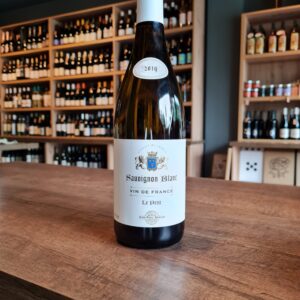 This is an excellent value French Sauvignon Blanc from the Loire valley and resembles the big Sancerre wines of the region . This Petit has nothing petit about it and has an outstanding quality and is very flexible. Can be drunk on it's own or paired with grilled trout, bass or fresh goats' cheese. Jean Paul Seguin winery is situated in the small village of Verdigny in the Sancerre region, the Fournier family has been making wine for many generations. The estate has grown from 5 hectares in 1950 to almost 30 hectares today, divided over the appellations of Mentou Salon, Pouilly-Fumé and Sancerre. The improvement made in vinification techniques and the permanent concern about quality result in well-balanced wines of great diversity. Enjoy this wine from the Loire without paying the big prices of its counterparts
This is an excellent value French Sauvignon Blanc from the Loire valley and resembles the big Sancerre wines of the region . This Petit has nothing petit about it and has an outstanding quality and is very flexible. Can be drunk on it's own or paired with grilled trout, bass or fresh goats' cheese. Jean Paul Seguin winery is situated in the small village of Verdigny in the Sancerre region, the Fournier family has been making wine for many generations. The estate has grown from 5 hectares in 1950 to almost 30 hectares today, divided over the appellations of Mentou Salon, Pouilly-Fumé and Sancerre. The improvement made in vinification techniques and the permanent concern about quality result in well-balanced wines of great diversity. Enjoy this wine from the Loire without paying the big prices of its counterparts -
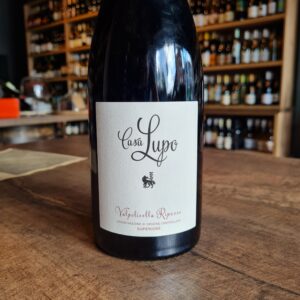 Great Ripasso wine here, any wine enthusiasts will see it as an honest to the point wine on it's Ripasso process. Otherwise known as a ‘Baby Amarone’. The term “Ripasso” means “repassed” referring to the production process whereby regular, fermented Valpolicella (which is a blend of three regional native red grape varieties – Corvina, Rondinella and occasionally Molinara) is added to a cask containing the skins and lees left over from recently fermented Amarone wines. The process of adding (or “repassing”) the lighter Valpolicella wine over the remainders of the “bigger” Amarone wine imparts additional color, texture and flavor to the Valpolicella wine. The “Appassimento” process is an ancient wine making technique used in Northern Italy to make Amarone – the Daddy of Italian wine and its by product Recioto della Valpolicella (a sweet red wine). Grapes are air dried on racks for a period of at least a couple of months and often as many as six, before being pressed. Also, it induces a second fermentation of the wine that increases the wine’s alcoholic content. The end result is a wine that retains the vibrancy of Valpolicella but is darker in colour, bigger and more flavourful and complex than the original Valpolicella. Ripasso wines are rich, full-bodied and share some of the same aroma and flavor profiles as Amarone wines, just less so. Since Ripasso wines are more approachable and less expensive than Amarones they can be enjoyed more regularly. The land is at an altitude of 450 meters above the see level and the soil is made by the alteration of calcareous-fossilized formations, in particular the red flake and biancone marble.After harvesting by hand, the Valpolicella, before aging, is macerated a second time on the mark of the Amarone just drawn and left to rest for about 15-20 days. Then a maturation in oak barrels of 500/1000 LT for 18 months takes place. Ageing in bottles follows that lasts until optimal maturity. It matches perfectly with mushroom risotto, red meat such as barbecue steak or white meat such as stewed rabbit, perfect with cheese of medium maturing.
Great Ripasso wine here, any wine enthusiasts will see it as an honest to the point wine on it's Ripasso process. Otherwise known as a ‘Baby Amarone’. The term “Ripasso” means “repassed” referring to the production process whereby regular, fermented Valpolicella (which is a blend of three regional native red grape varieties – Corvina, Rondinella and occasionally Molinara) is added to a cask containing the skins and lees left over from recently fermented Amarone wines. The process of adding (or “repassing”) the lighter Valpolicella wine over the remainders of the “bigger” Amarone wine imparts additional color, texture and flavor to the Valpolicella wine. The “Appassimento” process is an ancient wine making technique used in Northern Italy to make Amarone – the Daddy of Italian wine and its by product Recioto della Valpolicella (a sweet red wine). Grapes are air dried on racks for a period of at least a couple of months and often as many as six, before being pressed. Also, it induces a second fermentation of the wine that increases the wine’s alcoholic content. The end result is a wine that retains the vibrancy of Valpolicella but is darker in colour, bigger and more flavourful and complex than the original Valpolicella. Ripasso wines are rich, full-bodied and share some of the same aroma and flavor profiles as Amarone wines, just less so. Since Ripasso wines are more approachable and less expensive than Amarones they can be enjoyed more regularly. The land is at an altitude of 450 meters above the see level and the soil is made by the alteration of calcareous-fossilized formations, in particular the red flake and biancone marble.After harvesting by hand, the Valpolicella, before aging, is macerated a second time on the mark of the Amarone just drawn and left to rest for about 15-20 days. Then a maturation in oak barrels of 500/1000 LT for 18 months takes place. Ageing in bottles follows that lasts until optimal maturity. It matches perfectly with mushroom risotto, red meat such as barbecue steak or white meat such as stewed rabbit, perfect with cheese of medium maturing.

